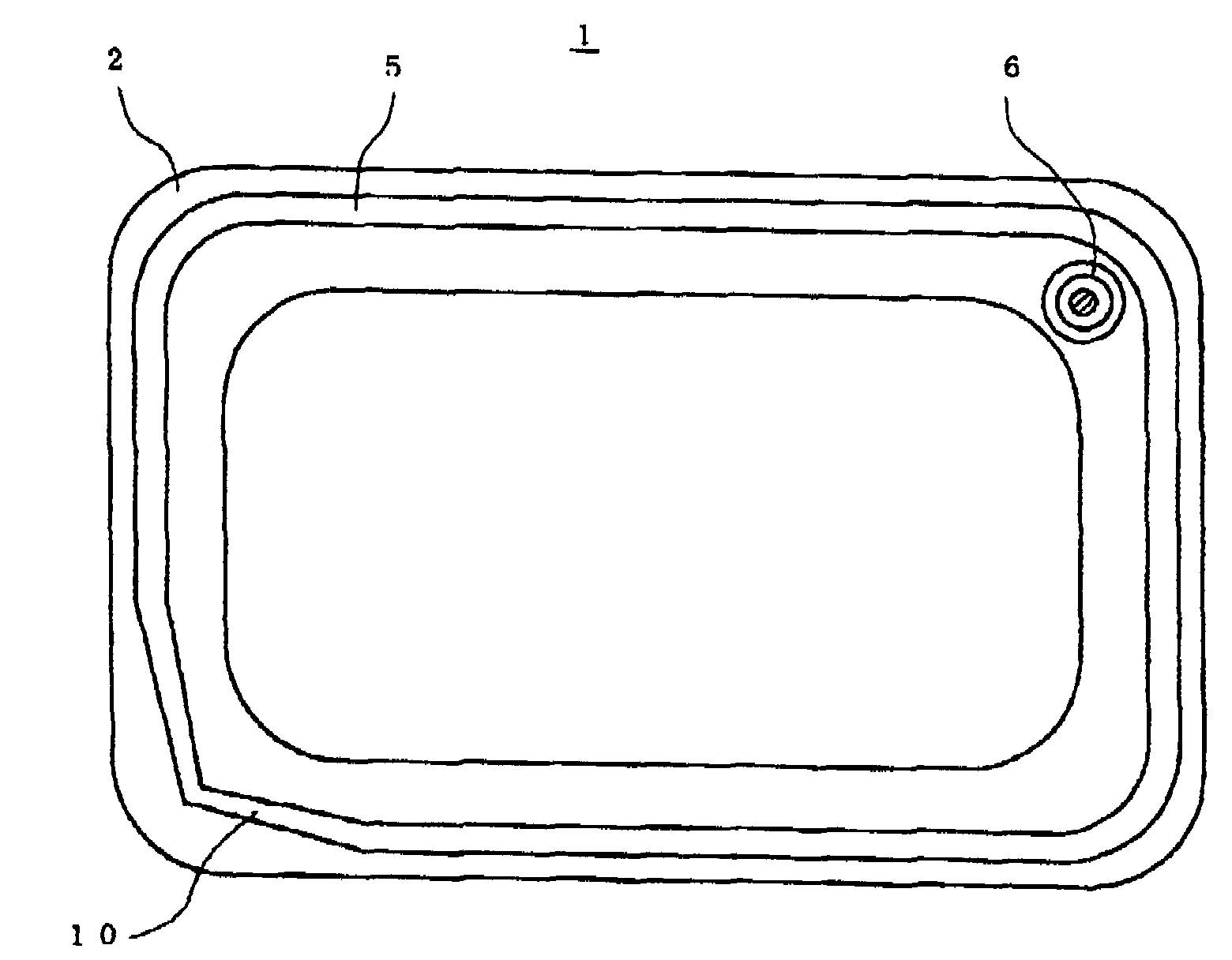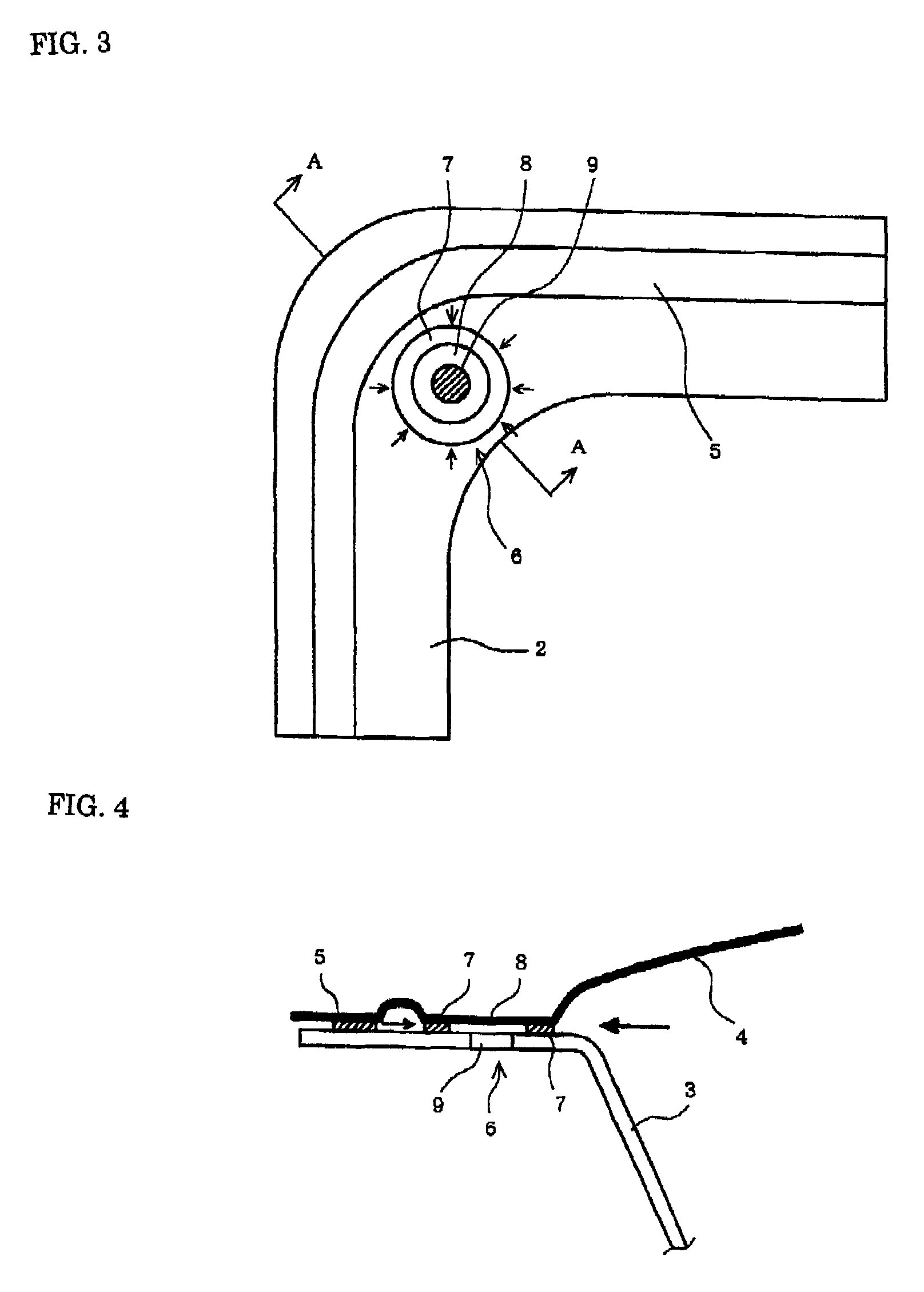Packaging container for microwave oven and process for manufacturing the same
a technology for packaging containers and microwave ovens, which is applied in the field of packaging containers for microwave ovens, can solve the problems of food scattered, damage such as scalding on the human body, and the mess inside the microwave oven, and achieve the effects of satisfying sealing performance between the packaging container body and the lid, low cost and enhanced taste of food
- Summary
- Abstract
- Description
- Claims
- Application Information
AI Technical Summary
Benefits of technology
Problems solved by technology
Method used
Image
Examples
example 1
[0121]A multi-layered sheet with a total thickness of 0.9 mm was manufactured by ordinary co-extrusion molding with a 3-kind and 5-layer constitution including: in the stated order from the outer layer, a polypropylene resin outer layer (thickness: 400 μm) with a titanium white pigment added to polypropylene having a melt index (MI) of 0.5; an adhesive layer (thickness: 20 μm) made of maleic anhydride modified polypropylene; a barrier layer (thickness: 60 μm) made of an ethylene-vinyl alcohol copolymer; the same adhesive layer as the above (thickness: 20 μm); and a polypropylene resin inner layer with MI=0.5 (thickness: 400 μm).
[0122]Using the multi-layered sheet, a square container (flange width: 8 mm in a linear portion, 17 mm of maximum width in a corner portion) with a flange having the shape shown in FIG. 5 with a container outer size of 156 mm×133 mm and a height of 29 mm (inner capacity: about 340 ml) was formed by an ordinary vacuum / pressure forming machine. In the flange pa...
example 2
[0127]The packaging container shown in FIG. 1 was manufactured in the same way as in Example 1, except that the steam releasing seal part 6 was formed in the flat flange part 2 without forming the annular convex part 17 to be the outer seal part 7 of the steam releasing seal part 6 in the flange part 2 in the corner portion of the container, and the packaging container was filled with 200 g of sterile rice and sealed hermetically in the same way.
example 3
[0136]A multi-layered sheet with a total thickness of 0.8 mm was manufactured by ordinary co-extrusion molding with a 4-kind and 5-layer constitution including: in the stated order from the outer layer, a polypropylene resin outer layer (thickness: 350 μm) with a titanium white pigment added to polypropylene having a melt index (MI) of 0.5; an adhesive layer (thickness: 20 μm) made of maleic anhydride modified polypropylene; a barrier layer (thickness: 60 μm) made of an ethylene-vinyl alcohol copolymer; the same adhesive layer as the above (thickness: 20 μm); and a polypropylene resin inner layer with MI=0.5 (thickness: 350 μm).
[0137]Using the multi-layered sheet, a square container (flange width: 8 mm in a linear portion, 17 mm of maximum width in a corner portion) with a flange having the shape shown in FIG. 5 with a container outer size of 156 mm×133 mm and a height of 29 mm (inner capacity: about 340 ml) was formed by an ordinary vacuum / pressure forming machine shown in FIG. 11....
PUM
| Property | Measurement | Unit |
|---|---|---|
| particle size | aaaaa | aaaaa |
| particle size | aaaaa | aaaaa |
| particle size | aaaaa | aaaaa |
Abstract
Description
Claims
Application Information
 Login to View More
Login to View More - R&D
- Intellectual Property
- Life Sciences
- Materials
- Tech Scout
- Unparalleled Data Quality
- Higher Quality Content
- 60% Fewer Hallucinations
Browse by: Latest US Patents, China's latest patents, Technical Efficacy Thesaurus, Application Domain, Technology Topic, Popular Technical Reports.
© 2025 PatSnap. All rights reserved.Legal|Privacy policy|Modern Slavery Act Transparency Statement|Sitemap|About US| Contact US: help@patsnap.com



